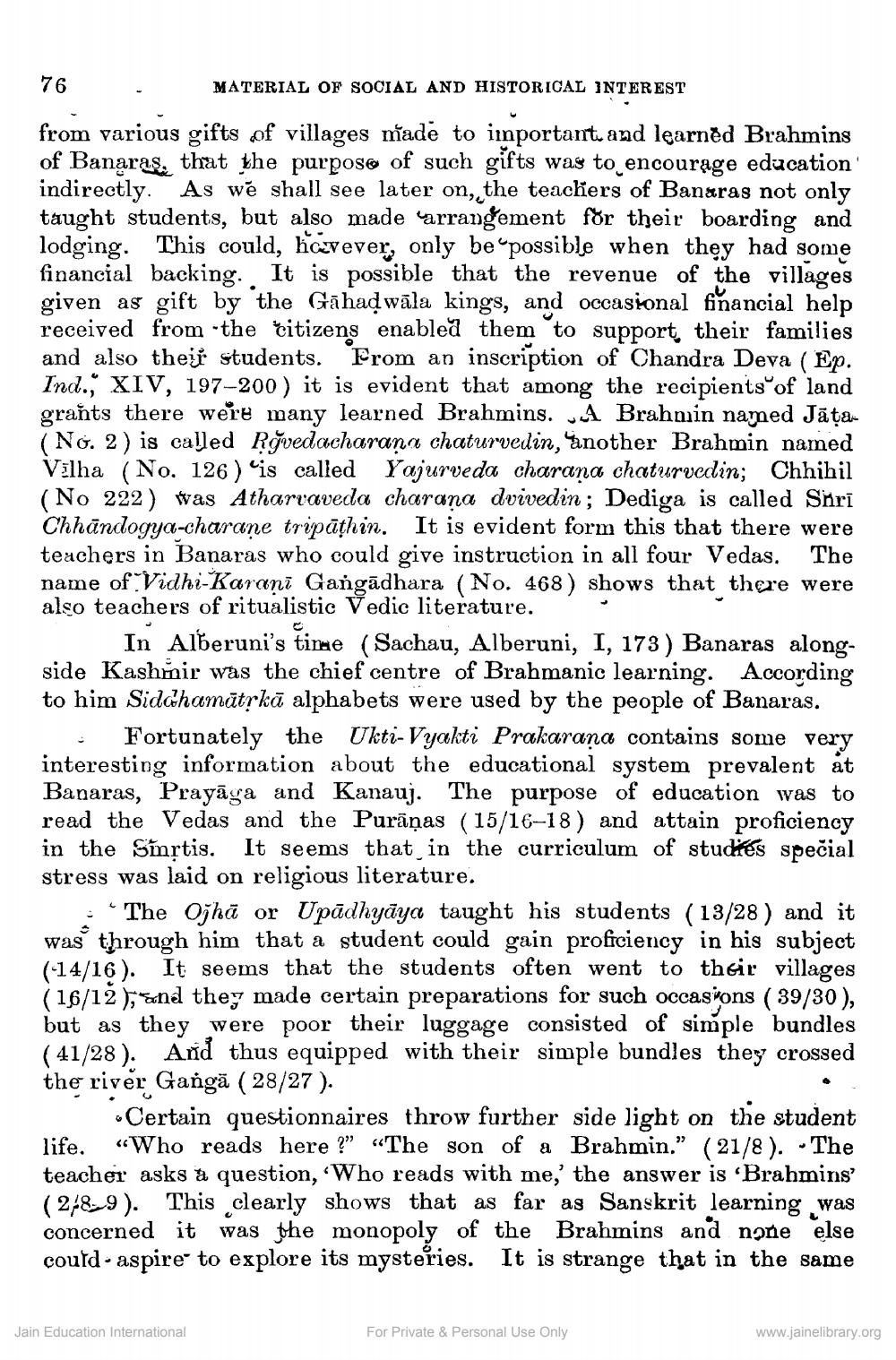________________
76
from various gifts of villages made to important, and learned Brahmins of Banaras that the purpose of such gifts was to encourage education indirectly. As we shall see later on, the teachers of Banaras not only taught students, but also made arrangement for their boarding and lodging. This could, however, only be possible when they had some financial backing. It is possible that the revenue of the villages given as gift by the Gahaḍwala kings, and occasional financial help received from the citizens enabled them to support, their families and also their students. From an inscription of Chandra Deva (Ep. Ind., XIV, 197-200) it is evident that among the recipients of land grants there were many learned Brahmins. A Brahmin named Jāṭa (No. 2) is called Rgvedacharana chaturvedin, another Brahmin named Vilha (No. 126) is called Yajurveda charana chaturvedin; Chhihil (No 222) was Atharvaveda charana dvivedin; Dediga is called Sări Chhandogya-charane tripathin. It is evident form this that there were teachers in Banaras who could give instruction in all four Vedas. The name of Vidhi-Karani Gangadhara (No. 468) shows that there were also teachers of ritualistic Vedic literature.
In Alberuni's time (Sachau, Alberuni, I, 173) Banaras alongside Kashmir was the chief centre of Brahmanic learning. According to him Siddhamātṛkā alphabets were used by the people of Banaras. Fortunately the Ukti-Vyakti Prakarana contains some very interesting information about the educational system prevalent at Banaras, Prayaga and Kanauj. The purpose of education was to read the Vedas and the Purāņas (15/16-18) and attain proficiency in the Smrtis. It seems that in the curriculum of studies special stress was laid on religious literature.
C
The Ojha or Upadhyāya taught his students (13/28) and it was through him that a student could gain proficiency in his subject (14/16). It seems that the students often went to their villages (16/12), and they made certain preparations for such occasions (39/30), but as they were poor their luggage consisted of simple bundles (41/28). And thus equipped with their simple bundles they crossed the river Ganga (28/27).
MATERIAL OF SOCIAL AND HISTORICAL INTEREST
ان
Certain questionnaires throw further side light on the student life. "Who reads here ?" "The son of a Brahmin." (21/8). The teacher asks a question, 'Who reads with me,' the answer is 'Brahmins' (2/89). This clearly shows that as far as Sanskrit learning was concerned it was the monopoly of the Brahmins and none else could aspire to explore its mysteries. It is strange that in the same
"
Jain Education International
For Private & Personal Use Only
www.jainelibrary.org




